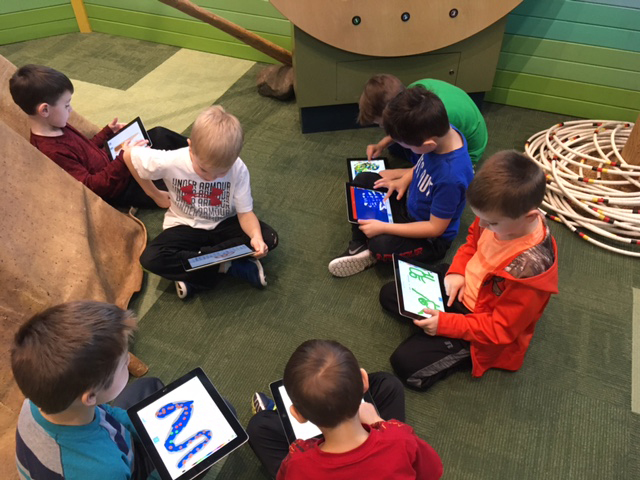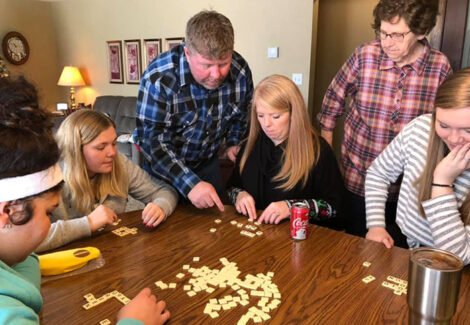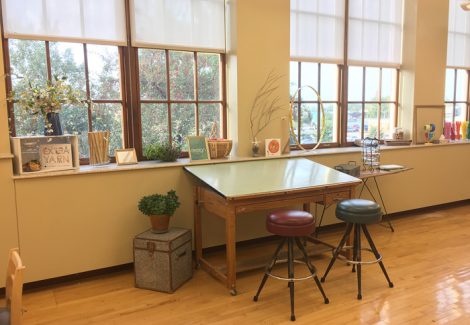As mentioned in the previous Innovation Learned Lab post, questions have the power to transform curiosity into a quest for knowledge. “How can we create a museum experience for other learners at Dakota Prairie?” inspired a group of children from Dakota Prairie Elementary to set out on the following quest.

With consideration for others in mind, a group of kindergarteners and junior kindergarteners set out on a quest to transform an empty classroom at their school into their own children’s museum. These children valued their opportunity to visit the museum weekly for Innovation Learning Lab and wanted to share that experience with others. Their first step was to find ways to further understand how experiences at the Children’s Museum of South Dakota connected to their goal of creating a museum experience at their school. The tools of play, material exploration, documenting, sharing, revisiting, and reflecting were key to accomplishing this goal.
Play is a natural strategy used by children for learning and making meaning. As children playfully explored exhibit spaces, they were charged with the question “would this be a good exhibit to include in our museum at Dakota Prairie?” After playing they talked about their experiences, resulting in ideas and possibilities coming to life for their museum.
Materials give an opportunity to bring ideas to life. They help thoughts become tangible, real-life objects. Exploring the materials invited children to envision if they should consider them for their museum experience at school. With the support of 2nd and 3rd graders from Dakota Prairie, they diligently documented their reasons for wanting certain materials in their museum.
- “You have to have enough materials.”
- “Yeah, so we can build with friends.”
- “It’s fun building together.”
- “The materials need to be strong.”
- “We can build in the gym, it’s big.”

Documenting thoughts, ideas, questions, and discoveries were of utmost importance. Notes, drawings, pictures, and charts all supported the children in organizing their learning and how to apply it to their process of creating a museum experience.
Sharing experiences at the end of each visit to the Children’s Museum helped children to see themselves as contributors to the process. As they shared discoveries, they were encouraged to compare ideas and see opportunities from other people’s perspectives. These dialogues helped piece together the next steps they would take back at school.
Revisiting their documentation at school helped evolve the connection between their museum experiences and the museum they were creating. Children used digital tools to draw some of their favorite museum exhibits. Later they tallied the top favorites so they could vote on which ones to include in their museum.

Reflection was a powerful tool in the construction of a deeper understanding of ideas. Philosopher and educator, John Dewey, states that “we do not learn from experience… we learn from reflecting on experience.” As children’s thoughts deepened through reflection, they uncovered the reality of making their Dakota Prairie Museum happen.
- “We can map out what the museum could look like.”
- “The Children’s Museum can share some of their materials”
- “We can ask the school to buy some new materials.”
- “Families can donate materials to us.”
- “We can make signs for our museum.”
Thrills of excitement rang down the halls as the children welcomed their first visitors into the Dakota Prairie Multiage Children’s Museum. The pride of their accomplishments was evident. Because the children sought out and constructed knowledge on their own during the creation of their museum, they became genuinely invested in the process. The tools of play, material exploration, documenting, sharing, revisiting, and reflecting made this experience a success.







